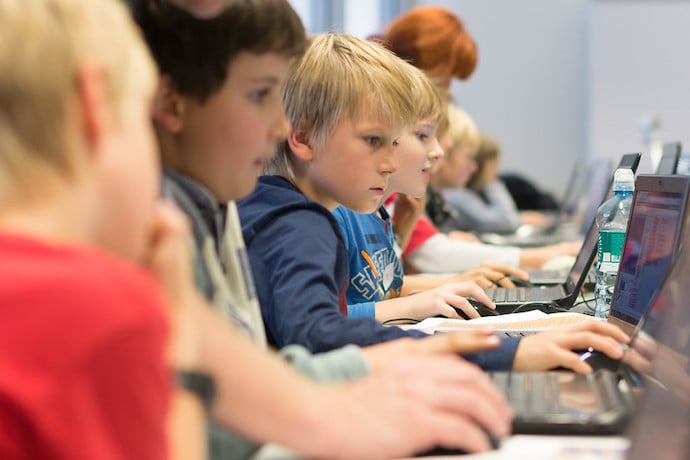Design Thinking encourages students to redefine and solve problems through a repetitive process that leads them to innovative and creative solutions. The goal of the Design Thinking project was to have students learn and practice using the Design Thinking Process while also integrating technology and software skills throughout the five stages of learning.
The process was not only explained but modeled for students throughout several lessons. Using the Stanford d.school Design Thinking Process shown at right, we asked our students to find a problem in our school community that they wanted to solve and to design and create that solution using 3D modeling, 3D printing or designing, coding, and creating an app.

Students started the project with a list of concerns they wanted to address through an innovative solution and, ultimately, filtered it down to one that they wanted to focus on.
Moving through the Design Thinking Process, students listed ideas for solutions using 3D modeling and printing or designing, coding, and creating an app. They conducted research in order to Empathize with and Define challenges. While sharing ideas, they used the Ideate step to prioritize solutions and create a design which led them to the Prototype which they then Tested. Students were able to jump back and forth between the steps in order to improve their project.
For example, once a prototype was tested, if it did not work as expected, a student would return to the Ideate step in order to make changes to their design, 3D printing filament (plastic, metal, etc), or coding in their app before moving on to testing again. This process repeated until students felt the prototype was ready.
Some examples of the projects students designed and created were a 3D-designed, modeled, and 3D-printed prosthetic hand; 3D-designed and printed fidgets to help students with anxiety, ADD, and ADHD, and an app designed and coded to help students raise money for homelessness in their community.

